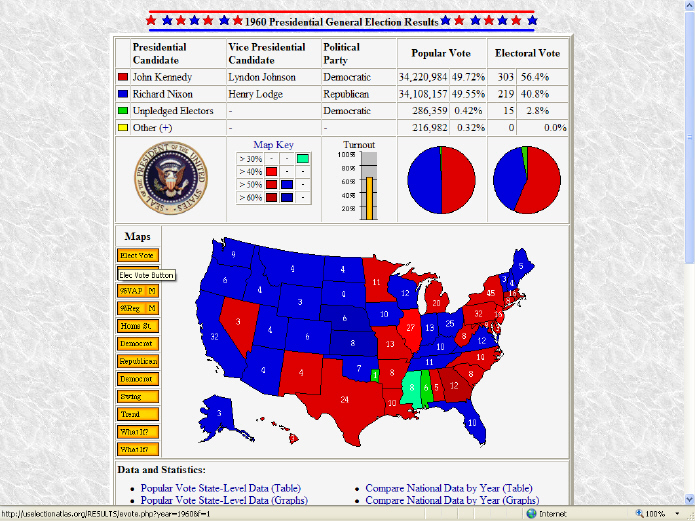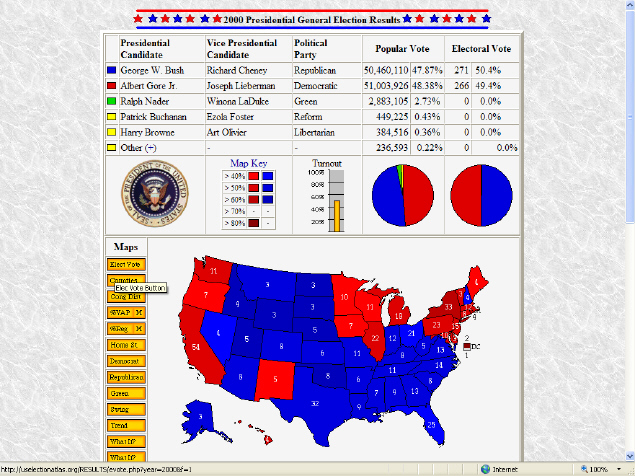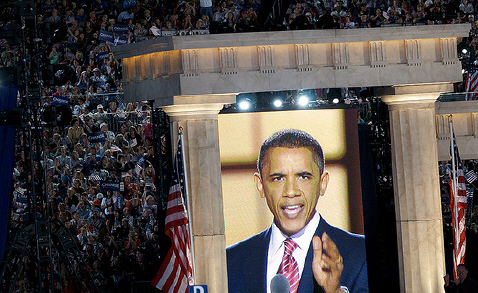Multiple Choice
Identify the
choice that best completes the statement or answers the question.
|
|
|
1.
|
____ is the first step to gaining American citizenship.
a. | Filing an application for citizenship | c. | The Declaration of
Intention | b. | Living in the United States for five years | d. | The Oath of
Allegiance |
|
|
|
2.
|
Citizens can vote to remove a public official from office in what type of
election?
a. | recall. | c. | initiative. | b. | proposition. | d. | referendum. |
|
|
|
3.
|
What is a way that citizens can propose new laws or state constitutional
amendments?
a. | referendum | c. | initiative | b. | mandate | d. | electorate |
|
|
|
4.
|
____ is an attempt to use information such as ads or speeches to promote a
particular person or idea.
a. | Propaganda | c. | Personification | b. | Canvassing | d. | Incumbency |
|
|
|
5.
|
The United States is said to have a ____ system.
a. | three-party | c. | multiparty | b. | one-party | d. | two-party |
|
|
|
6.
|
A government controlled by one person or a small group of people is
called
a. | a dictatorship. | c. | a representative democracy. | b. | an
anarcho-syndicalist commune. | d. | a direct democracy. |
|
|
|
7.
|
In ____ primaries, only declared members of a party are allowed to vote for that
party’s nominees.
a. | public | c. | closed | b. | limited | d. | open |
|
|
|
8.
|
Government by the consent of the governed is called
a. | popular sovereignty. | c. | public policy. | b. | democracy. | d. | self-perpetuating
autocracy. |
|
|
|
9.
|
Which candidate won the presidential election in the graphic?  a. | John Kennedy | c. | Lyndon Johnson | b. | Richard Nixon | d. | Henry Cabot
Lodge |
|
|
|
10.
|
People who cannot go to the polls can request an ____ ballot in advance.
a. | electorate | c. | absentee | b. | apathy | d. | exit |
|
|
|
11.
|
The ____ Party opposes the power of corporations and favors decision making at
the grassroots level.
a. | Libertarian | c. | Republican | b. | Progressive | d. | Green |
|
|
|
12.
|
____ includes the ideas and attitudes that most people hold about the government
and political issues.
a. | Public policy | c. | Public opinion | b. | Mass media | d. | Propaganda |
|
|
|
13.
|
What term is used to describe an association of voters with broad common
interests who want to elect candidates that share those interests.
a. | political party | c. | third party | b. | Populist party | d. | social group |
|
|
|
14.
|
A ____ is a voting district.
a. | polling place | c. | precinct | b. | electorate | d. | bailiwick |
|
|
|
15.
|
Each party chooses its convention delegates through a combination of primary
elections and what other type of election?
a. | committees. | c. | caucuses. | b. | canvassing. | d. | wards. |
|
|
|
16.
|
The primary goal of interest groups is to influence
a. | public policy. | c. | the president. | b. | corporations. | d. | public opinion. |
|
|
|
17.
|
The ____ primary is an election in which voters choose candidates to represent
each party in a general election.
a. | public | c. | runoff | b. | secret | d. | direct |
|
|
|
18.
|
Television, radio, newspapers, magazines, recordings, movies, and books are
called
a. | mass media. | c. | electronic media. | b. | print media. | d. | white noise. |
|
|
|
19.
|
All voters in which area cast their ballots at the same voting place?
a. | ward | c. | precinct | b. | county | d. | caucus |
|
|
|
20.
|
Which propaganda method is used to make people think a candidate is just like
them?
a. | bandwagon | c. | endorsement | b. | plain-folks | d. | aw-shucks |
|
|
|
21.
|
Which type of role is played by the mass media when they expose government
misconduct?
a. | intelligence | c. | watchdog | b. | spotlight | d. | leak |
|
|
|
22.
|
Who do independent candidates can get on most states’ ballots since they
do not have primary elections?
a. | The president orders their candidate to be listed on the ballot. | c. | They don’t
need to do anything. | b. | By holding caucuses. | d. | They must get names on a
petition. |
|
|
|
23.
|
What is the term for people who move permanently to a new country?
a. | residents | c. | citizens | b. | aliens | d. | immigrants |
|
|
|
24.
|
What allows people to choose their leaders and voice their opinions on
issues?
a. | limited government | c. | rule of law | b. | free elections | d. | majority rule |
|
|
|
25.
|
As Americans, we show our or love for our country by flying the flag. What is
another term for this idea?
a. | citizenship | c. | majority rule | b. | jingoism | d. | patriotism |
|
|
|
26.
|
Donations given to political parties and not designated for a particular
candidate’s campaign are called
a. | public funds. | c. | slush funds. | b. | soft money. | d. | bankrolls. |
|
|
|
27.
|
What term refers to all of the people who are eligible to vote?
a. | constituents | c. | tabulates | b. | electorate | d. | masses |
|
|
|
28.
|
Unlike citizens, aliens may not do which of the following activities?
a. | own property. | c. | vote in elections. | b. | attend public schools. | d. | hold jobs. |
|
|
|
29.
|
What is the term for the process by which aliens can become citizens?
a. | probation | c. | dual citizenship | b. | immigration | d. | naturalization |
|
|
|
30.
|
If neither presidential candidate wins a majority of electoral votes, who elects
the president?
a. | Senate | c. | outgoing president | b. | House of Representatives | d. | Supreme Court |
|
|
|
31.
|
People who share a point of view about an issue sometimes form an ____ to
promote their beliefs.
a. | action committee | c. | issue group | b. | opinion committee | d. | interest group |
|
|
|
32.
|
Which event in the path to the White House made John McCain the front runner for
the Repubnlican nomination in 2008?
a. | The Iowa Caucuses | c. | Super Tuesday | b. | The New Hampshire Primary | d. | the General
Election |
|
|
|
33.
|
Radio, television, and the Internet are considered ____ media.
a. | electronic | c. | wireless | b. | invisible | d. | broadband |
|
|
|
34.
|
____ is the use of violence by groups against civilians to achieve a political
goal.
a. | Deportation | c. | Police action | b. | Patriotism | d. | Terrorism |
|
|
|
35.
|
Most presidents employ a ____ whose job is to conduct polls regularly.
a. | poll sitter | c. | polity | b. | pollster | d. | poll bearer |
|
|
|
36.
|
Tammany Hall and Hillary Clinton’s 2008 campaign have which element in
common?
a. | They are both powerful political machines. | c. | They both committed
crimes. | b. | The both lost elections. | d. | They both had female candidates run for office. |
|
|
|
37.
|
A ____ is a series of statements expressing a party’s principles, beliefs,
and positions on election issues.
a. | ward | c. | caucus | b. | plank | d. | platform |
|
|
|
38.
|
____ is the study of the rights and duties of citizens.
a. | Citizenship | c. | Patriotism | b. | Civics | d. | Economics |
|
|
|
39.
|
What is a third party formed only to promote one social, economic, or moral
issue?
a. | single-issue party | c. | lame duck | b. | stump | d. | plank party |
|
|
|
40.
|
Which candidate was defeated by Barack Obama for the Democratic nomination in
the 2008 presidential election?
a. | John McCain | c. | Ralph Nader | b. | Rudy Giuliani | d. | Hillary Clinton |
|
|
|
41.
|
Which candidate won the popular vote in the 2000 election?  a. | Richard Cheney | c. | George Bush | b. | Ralph Nader | d. | Al Gore, Jr. |
|
|
|
42.
|
Public policy is a course of government action to achieve what aspect of
government?
a. | community goals. | c. | foreign relations. | b. | consumer protection. | d. | national
security. |
|
|
|
43.
|
Which idea best describes the way the number of electors for each state is
determined? a. | Each state receives electors equal to the wealth of the population of each
state. | c. | Each state receives electors equal to Congressional districts. | b. | Each state receives
electors equal to the population of each state. | d. | Each state receives electors equal to the
number of members in Congress. |
|
|
|
44.
|
What is the term for the ruling authority for a community such as a nation,
state, or city?
a. | democracy | c. | public policy | b. | majority rule | d. | government |
|
|
|
45.
|
Local party leaders try to build support for their party at the ____, or
neighborhood, level.
a. | street | c. | district | b. | grassroots | d. | ward |
|
|
|
46.
|
In this image, Sen. Barack Obama is going his acceptance speech at the 2008
Democratic National Convention in Denver. What is the significance of this event?  a. | Obama is choosing Sen. Joe Biden to be his running mate. | c. | Obama is declaring
his candidacy for president. | b. | The nomination of Barack Obama as the
Democratic candidate is being made official. | d. | Obama is going to be sworn in as
president. |
|
|
|
47.
|
Elections are a two-part process involving primary races and
a. | the campaign financing. | c. | the campaign. | b. | the general
election. | d. | the
nomination. |
|
|
|
48.
|
The Fourteenth Amendment defines a U.S. citizen as which of the
following?
a. | Anyone “born or naturalized in the United States.” | c. | Anyone whose
parents are citizens. | b. | Anyone living in the United
States | d. | Anyone who says the
pledge of alliegiance. |
|
|
|
49.
|
What type of groups support causes that affect the lives of Americans in
general?
a. | Economic interest | c. | Mass media | b. | Watchdog | d. | Public interest |
|
|
|
50.
|
E pluribus unum is Latin for
a. | “One nation, under God.” | c. | “In God we
trust.” | b. | “Out of many, one.” | d. | “One nation to rule them
all.” |
|
|
|
51.
|
Special-interest groups help fund a candidate’s campaign by forming
a. | bankrolls. | c. | political action committees. | b. | money
beds. | d. | propaganda
units. |
|
|
|
52.
|
What is the term for an individual part of a party’s platform?
a. | plank | c. | unit | b. | ward | d. | caucus |
|
Matching
|
|
|
Identify which party most likely would support the positions listed. a. | Democratic Party | b. | Republican Party |
|
|
|
53.
|
Opposes regulation of health care industry.
Supports health care savings and tax credits to aid in obtaining insurance
|
|
|
54.
|
Agrees the US should drill in Alaska for oil to reduce foreign imports of
oil.
|
|
|
55.
|
Increase funding for schools, raise teacher pay, provide student loans.
|
|
|
56.
|
Believes corporations should pay more in taxes and be regulated by the
government
|
|
|
57.
|
Supports tougher anti-pollution laws and
restrictions on farming, milling, and logging on federal lands.
|
|
|
58.
|
Increase defense spending and maintain a high troop presence in Iraq.
|
|
|
59.
|
Supports controls on campaign contributions.
|
|
|
60.
|
Provide tax cuts for businesses and upper class to stimulate the
economy.
|